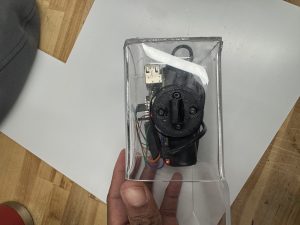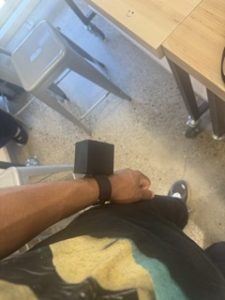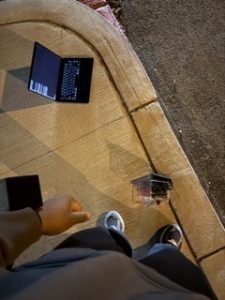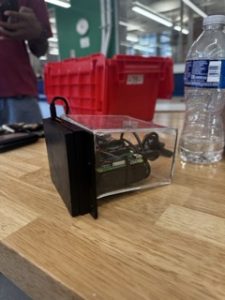WORK ACCOMPLISHED:
This week I worked on fixing the wristband case, creating the main device case, and testing the detection system.
I had to 3D print a our wristband case a couple times to fix the fit and closing mechanism that secures the circuit but still allows us to remove it if necessary. Ordered and received velcro straps so wristband is complete and can be attached to the wrist. However, I have yet to test how stable it is while riding a bike.
Additionally, I worked with forever to make our main device encasing through acrylic bending. 3D printing it was too expensive. I also drilled in the mount piece so the device can now be attached to a bike.
Lastly, towards the end of the week I spent time testing the blindspot detection system against bikes and cars while the sensor was stationary. Testing revealed the sensors field of view is even narrower than I thought as it requires objects to be almost directly in front of it to be detected. But, the time between detection and a vibration is fairly quick and meets our 1 second use case.
New Knowledge:
During every iteration of this project I learned something new. I learned more about interacting with different microcontrollers (RPis, Arduinos, etc), bluetooth communication, use cases of various sensors, operating different CAD softwares, 3D printing, acrylic bending, and the approach for screwing different materials together. The most prevalent learning strategy I used was youtube videos along with trial and error. I also leaned on GitHub (for starting certain serial communications) and TechSpark workers (3D printing, drill, and acrylic bending) for guidance.
PROGRESS:
I’m fairly on pace with my tasks right now, but I should have completed on bike tests this week. Finishing the encasings took more time than expected.
NEXT WEEK’S DELIVERABLES:
Next week, I aim to complete rigorous testing of the blindspot detection systems while it’s on a moving bike. I will also spend time working on the final presentation slides and poster.




